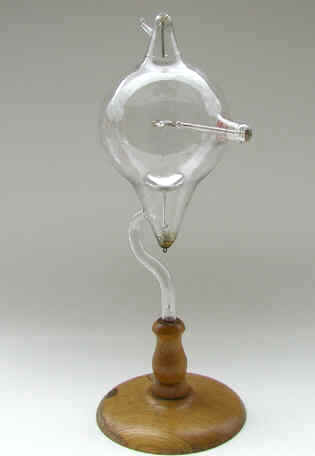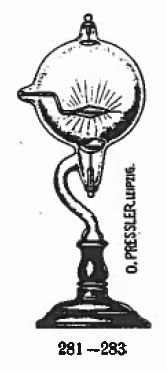Heating Effects Tube (early 1900s)


The "heating effects tube" was created in the late 1800s by William Crookes to demonstrate the amount of energy carried by the cathode rays (electrons) that stream from the cathode to the anode. The magnitude of this energy was indicated by the fact that the platinum foil in the center of the tube glowed red when a high voltage was applied.
To enhance the heating effect, Crookes used a cup-shaped cathode which focused the cathode rays on the platinum target—the electrons leave the cathode at right angles to its surface. Later, in 1896, Herbert Jackson was the first to use this type of cathode for the production of X-rays.
This example is hard to date (early 1900s?) and the manufacturer hard to identify, because this type of tube has been in continuous manufacture since the 1800s. It was intended for classroom demonstrations.
Size: Approximately 13" high (including base) with 4" bulb diameter
The drawing below was taken from the 1914 catalog of the Otto Pressler company.

